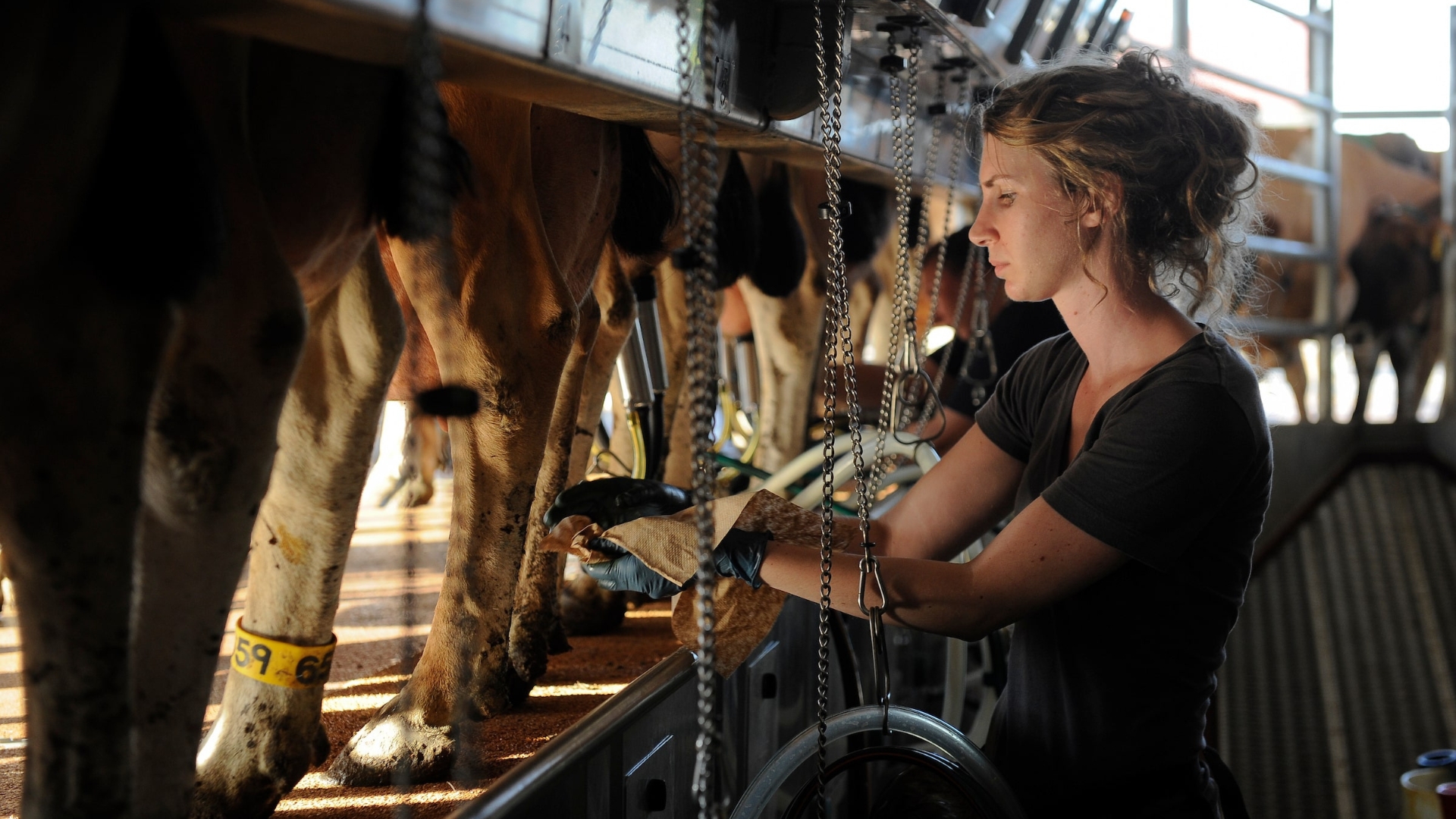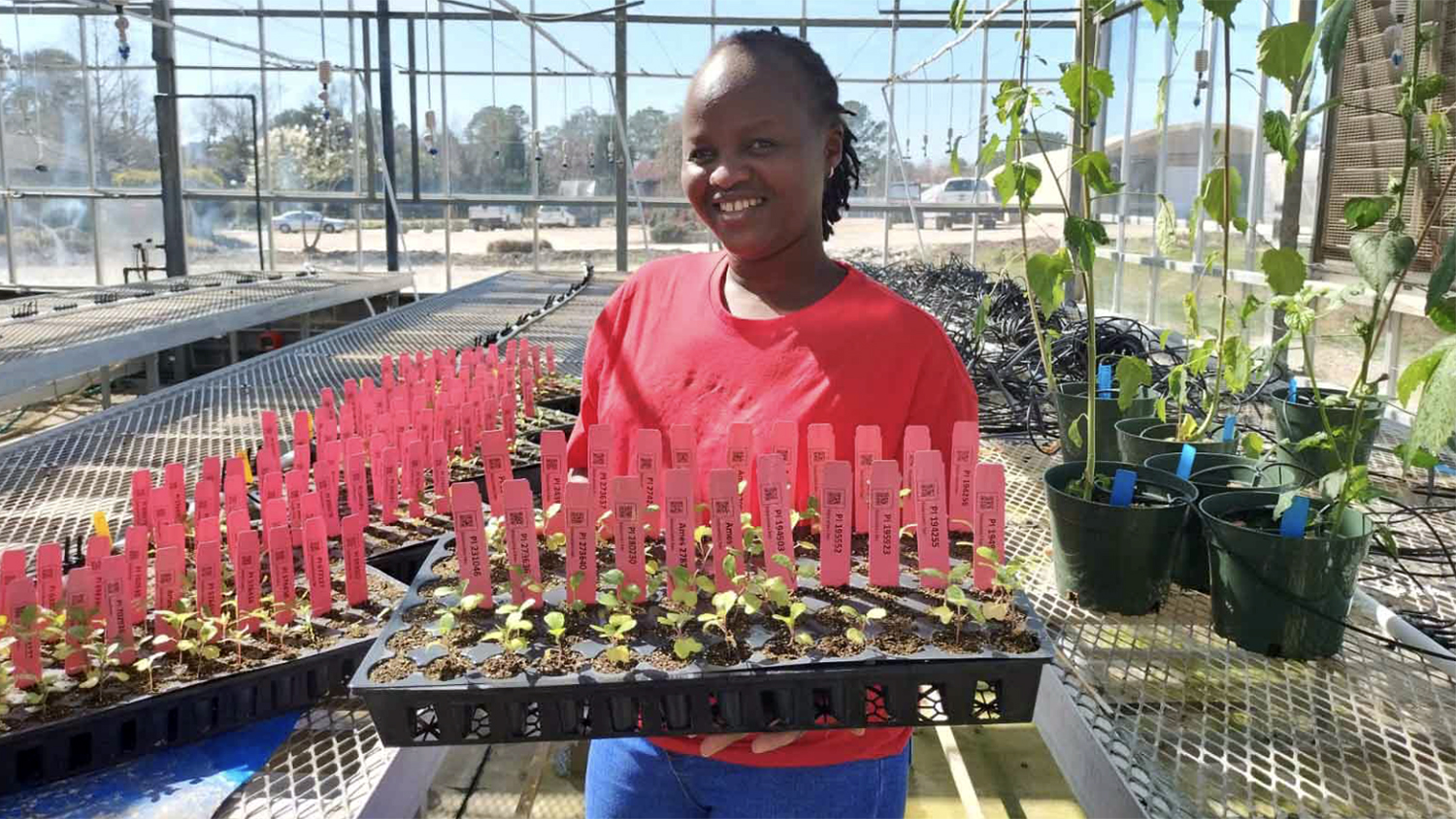Protecting poultry from Salmonella
College of Agriculture and Life Sciences researchers are working to develop a vaccine that would protect poultry – and by extension people who eat chickens and eggs – from Salmonella and the sickness and sometimes death the bacterium causes.
Salmonella is the most frequently reported bacterial cause of foodborne illness in the United States, according to the U.S. Department of Agriculture’s Food Safety and Inspection Service. The federal Centers for Disease Control and Prevention puts the number of reported cases of salmonellosis, the sickness caused by the bacterium, at 40,000 annually; however, many cases go undiagnosed or unreported. The CDC says the actual number of cases is likely well over a million.
Salmonellosis usually consists of 12 to 72 hours of diarrhea, fever and abdominal cramps; however, an infection can be deadly for the elderly, infants or people with impaired immune systems.
While people can come in contact with Salmonella from a range of sources, one source of particular concern is poultry.
When it comes to Salmonella, “poultry seem to be one of the primary food items that people get exposed to, whether it’s meat or eggs,” says Dr. Matt Koci, assistant professor of poultry science. Chickens can live with Salmonella; infected chickens don’t get sick. As a result, chicken flocks can be a reservoir for Salmonella, Koci explains. And the eggs of infected chickens may be infected as well.
Koci and Dr. Hosni Hassan, professor of microbiology, are working to produce a vaccine that would protect chickens from Salmonella infection. At the heart of this effort is a mutant strain, or type, of the Salmonella bacterium discovered in Hassan’s lab. The scientists believe they can use the mutant strain to make a Salmonella vaccine.
The mutant was a happy accident, Hassan says, discovered during unrelated research. The mutant form of Salmonella does not contain a master regulator gene found in other types of Salmonella, Hassan explains. The regulator gene controls approximately 300 other genes, he adds, and without these genes, the Salmonella strain is attenuated, or less able to cause disease.
When he realized the benign nature of the mutant Salmonella strain, Hassan also realized it might be a good candidate for a vaccine. Vaccines work by teaching an organism’s immune system to recognize a disease-causing pathogen. If the vaccine does its work, the organism quickly recognizes the presence of a disease-causing pathogen and fights off the pathogen before it causes sickness.
Vaccines can be made with live but attenuated types of micro-organisms or with disease-causing micro-organisms that have been killed. The vaccine Hassan and Koci are developing would be a live vaccine, and live vaccines are typically more effective than so-called killed vaccines.
Koci and Hassan think an inexpensive vaccine can be produced using the mutant Salmonella strain. That’s important, because a vaccine will have to be inexpensive — around a penny a dose — to be considered cost-effective in the poultry industry.
N. C. State University shares the scientists’ optimism. The university has applied for a patent on the process used to produce the mutant, and Hassan and Koci have been awarded a $65,000 grant from the Chancellors’ Innovation Fund, which provides funding to help bring promising research to market.
Hassan and Koci think a vaccine could be used on poultry to produce Salmonella-free flocks. There are now live Salmonella vaccines available, Koci says, but it’s not clear how effective they are at eliminating Salmonella.
In early November, Hassan and Koci had just finished one of their first tests of their vaccine and were analyzing the results. The scientists gave approximately 300 chickens oral inoculations of the vaccine. They are now checking the chickens to see if they exhibited an immune response to the mutant Salmonella strain used to make the vaccine.
“We also challenged the chickens with the virulent wild-type Salmonella, and we’re looking to see, Did giving the vaccine help the chickens prevent colonization by the virulent strain?, which ultimately is what the consumer cares about,” says Koci.
If the scientists can show conclusively that the vaccine works, they’ll experiment with more cost-effective ways to administer the vaccine, such as putting it in a spray that’s sprayed over poultry or in the water poultry drink.
Hassan and Koci also think the same process used to produce an attenuated strain of Salmonella might be used to produce less-virulent strains of other bacteria that cause disease, such as E. coli and Shigella.
It may also be possible to add genes from other disease-causing organisms that infect poultry, such as Newcastle Disease, to the Salmonella strain, producing a multi-purpose vaccine. Hassan explains that if genes that contain the instructions for producing certain proteins can be added to the Salmonella vaccine, it’s possible the presence of the protein will elicit an immune response. The result will be protection from both Salmonella and the disease related to the protein.
The accidental discovery of a mutant form of Salmonella could end up providing people, poultry and other animals protection from a range of diseases.
– Dave Caldwell
- Categories:



Your article leaves the impression that poultry and eggs are commonly contamininated with Salmonella and are the only food product with that potential problem. That is a bad rap for those producing poultry and who go to great lengths to avoid Salmonella. Current programs conducted by the egg producers to avoid SE in eggs is a good example. Why not education consumers on both sides of the issue rather than be alarmist. While Salmonella can be in poultry and eggs how many times has there been recalls of hamburgers, peanut butter, fresh produce and most recently fish in the last few years. Good luck with the vaccine as it will be a help to food chain safety, but why does one have to be food saftey alarmist to tell people about your research effort.